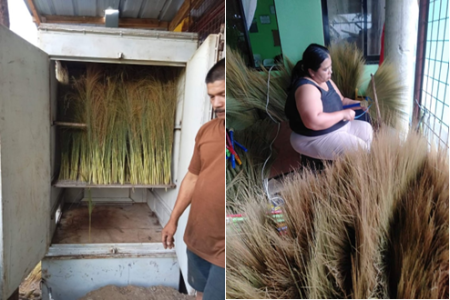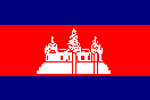SEVERAL USE AND BENEFIT OF FOREST TREE BARK | 31/12/2016
Tree bark chemical content are for adhesive material which using on the tannin content of the bark; flavour/scent enhancer i.e cinnamon; cosmetics ingredient, essential oils, pigment material, fiber material, and pesticide (for certain organisms).
Tannin is further divided based on its phenolic chemical properties into hydrolyzable tannin and condensed tannin. Hydrolyzable tannin whe benefit contained in tree bark is oftenly ignored, in timber processing industries especially in sawing place bark is considered as waste, thus it needs to be transported and disposed. While, had the benefit contained inside the bark is known, it would be source of income instead. Bark is actually phloem tissues that function as food storage and distributor to the tree itself. When photosynthesis process took place in a tree, it produce energy that will be use some for multiplication of xylem cell (wood), and some will be stored at bark parenchyme, thus phloem tissue holds many chemical substances such as alkaloid and amino acid that also beneficial for human.
In general, chemical substances contained in bark is grouped into : alkaloid, steroid, flavonoid, tannin, saponin, quinone/phenol, gelatin and essential oils. Different tree will have different content of substances in its bark, this is due to different genetical trait working in the production process of the substance during photosynthesis (Beck et al,1991, Koch,P. 1985). Utilization of the tree bark in our life is highly depends on the kind of chemical substances contained. According to Pizzi (1983), some use of trill produce simple phenol such as pyrogalol and elagic acid when reacted with acid base or enzyme.hydrolyzable tannin production is limited since chemically and economically seen to be less profitable. The world’s commercial tannin production is about 90% condensed, which in 1980 the production reached 350 thousands ton/year, mostly for adhesive (Pizzi,1983). According to Browning (1967) to attain tannin which is a complex polyphenolic matter inside bark, wood, roots, seed and leaf, could be done by extraction with water, ethanol, or acetone. High content is found in the bark. Tree bark shows unique characteristic depend on what kind of extractive content (phenolic and pectin) present in high number. Lauraceae bark is varied and specific, different from the other bark, and its bark is commonly use for traditional medicine (Anonim, 1962).
Lauraceae family has 11 genera that consist of ± 60 species, bark of this family produce specific scent/odour, some are fragrant while some has pungent sickening odour. Several lauraceae’s bark alkaloid is identified as laurotethanine and lauranthine. Several lauraceae bark is used to catch fish, taking advantage of its pungent odor (Heyne, 1926).
Gemor wood ( Alseodaphne sp ) is a member of lauraceae, its bark contain tannin identified as laurotetanine (Anonim, 1962) (Anonim, 1993).
By Dayak People at Central Kalimantan, smoke produced from burnt bark is traditionally use for mosquito repellent. The indigenous knowledge has been used in producing mosquito coils. Compared to Ki Limo treee/ Krangean wood ( Litsea cubeba Pers.) which according to Greshoff and Gorter, 1921 (in Heyne, 1926) has been identified to contain Laurotetanine. The commercially distributed mosquito repellent contain d-aletrin which is a derivative of tetramethrine which belong to pirethroid group.
Supply availability is needed in the production and development of a product. Thus, u Gemor wood availability and distribution analysis is needed if its going to be used as substitute for synthetic mosquito repellent substance.
Test result against mosquitoes inside jar shows that mosquitoes were flying at first contact with the smoke, which indicates repellent properties of all three mosquitoe-repellent samples. While the following test result for all three samples shows that mosquitoes were flying in random move and fell but were able to got back and flying again, with an exception for the commercial sample, in which the mosquitoes were felt and died. This is due to d-alethrin content, a very toxic synthetic pesticide against mosquitoes but is not safe for human health and environment at long exposure.
Chemical analysis of the substance shows that Gemor is indeed carcinogenic for mosquitoes due to pyrethrine content. Gemor bark contain 1.8% pyrethrine. Laurotethanine attained from the bark is able to repell and intoxicate mosquitoes, thus it shows high probability to be used to substitute active pesticide in mosquitoes coil (Zulnely dan D. Martono. 2002)
REFERENCES
Anonim, 1926. The Wealth of India. A Dictionary of India Race Materials and Industrial Product Vol.VI (L-M) Council of Science and Industrial Research New Delhi. Hal 152-156.
Anonim, 1993. Pengolahan kayu gemor sebagai bahan pemberantas nyamuk jenis bakar. Balai Penelitian dan Pengembangan Industri. Departemen Perindustrian, Banjarbaru.
Beck, W.S, Liem, K.F and Simpson, G.G, 1991. LIFE. An Introduction to Biology Harper Collins. Publisher. 3 nd rd. New York. pp. 249 – 259.
Browning,B.D. 1967. Method of Wood Chemistry Vol. I Publisher Inter Science.
Effendi, R. 2001. Pengaruh pengambilan kulit gemor (Alseodaphne spp.) terhadap kelestarian di Teluk Umpan, Kalimantan Tengah. Duta Rimba 247:10-12.
Heyne, K. 1926., De Nuttige Planten van Indonesie. Diterjemahkan dalam : Tumbuhan Berguna Indonesia. Lembaga Penelitian Hasil Hutan Bogor, hal 795 – 829.
Koch,P. 1985. Utilization of Hardwoods Growing on Southern Pine Site. U.S Department of Agriculture, Forest service. USA.
Martono.D. 2004. Eksplorasi pemanfaatan kulit pohon Lauraceae untuk bahan obat nyamuk bakar. Prosiding Seminar Nasional Mapeki VII, Makasar, 5-6 Agustus 2004.
Pizzi,A. 1983. Wood Adhesive Chemistry and Technology, Marcel Dekker Inc. New York.
Zulnely dan D. Martono. 2002. Pemanfaatan Kulit Gemor (Alseodaphne sp) sebagai bahan untuk pembuatan anti nyamuk bakar. Prosiding Seminar Nasional MAPEKI V. Bogor, 30 Agustus – 1 September 2002.
Writer : D Martono
Translator : Rossi M Tampubolon
















